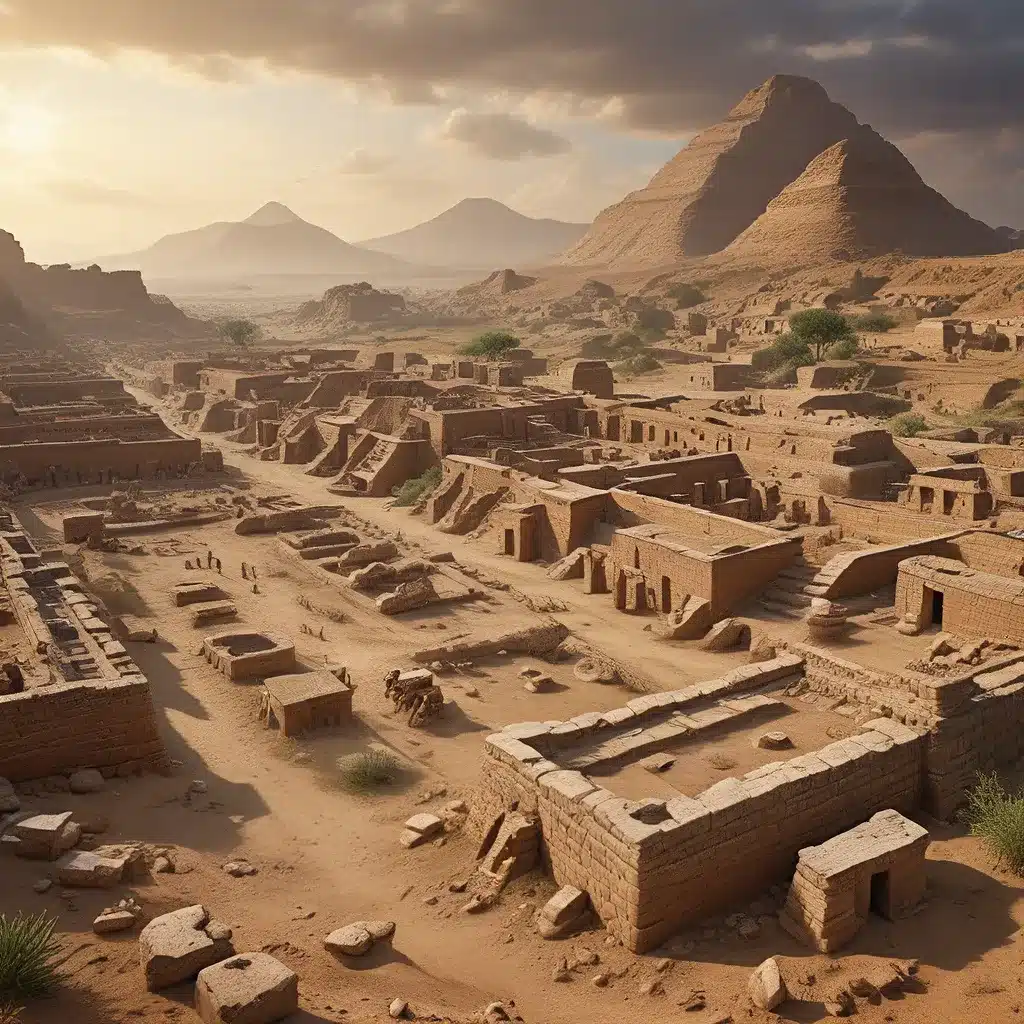
Here is the informative article about reconstructing ancient worlds through archaeology, following the provided instructions:
The Foundations of Archaeological Visualization
Archaeology, or the study of human activity through the recovery and analysis of material culture, has long been a discipline rooted in the power of visual representation. From the earliest days of antiquarian exploration to the modern digital age, archaeologists have employed a vast array of visualization techniques to document, interpret, and communicate their findings about the past.
The foundations of archaeological visualization can be traced back to the Renaissance, when a renewed interest in classical culture sparked a surge of activity in the recovery and study of ancient artifacts. Humanists and artists alike began to collect and document these antiquities, using drawings and sketches as tools to capture their physical characteristics and guide scholarly discourse. These early visualizations were often accompanied by detailed descriptions, serving as both a record of the objects and a means of organizing and cataloging the growing collections.
As the study of the past evolved, so too did the methods of visual representation. In the seventeenth and eighteenth centuries, the rise of scientific empiricism led to the development of more standardized techniques for depicting artifacts, with an emphasis on accurately recording their physical features and highlighting key attributes for comparative analysis. This codification of artefact illustration was a crucial step in the transformation of archaeology from an antiquarian pursuit to a more systematic discipline.
The nineteenth century saw the emergence of the first professional archaeologists, who brought with them a renewed focus on the rigorous documentation of excavations and the visual recording of archaeological contexts. Figures like William Flinders Petrie and Mortimer Wheeler pioneered innovative methods of site recording, incorporating detailed plans, sections, and stratigraphic drawings to capture the three-dimensional nature of the archaeological record.
The Rise of Archaeological Visualization Techniques
The twentieth century witnessed a proliferation of archaeological visualization techniques, as the discipline continued to evolve and diversify. The development of aerial photography, geophysical survey, and 3D modeling opened up new avenues for documenting and interpreting archaeological sites, while the increasing use of computer-aided design (CAD) and digital illustration tools revolutionized the way archaeologists recorded and communicated their findings.
One of the most significant innovations in archaeological visualization was the development of the “T-section” method for depicting pottery in the late nineteenth century. This standardized approach to artifact illustration, which combined plan, profile, and cross-section views, enabled archaeologists to convey a wealth of information about an object’s form and function on a single, two-dimensional surface.
Physical models also played a crucial role in archaeological visualization during this period. Figures like Augustus Pitt-Rivers and Caspar Reuvens pioneered the use of three-dimensional, scale models to document and communicate the spatial relationships and stratigraphic contexts of their excavations, creating tangible simulations of the archaeological record.
The Impact of Digital Technologies
The advent of digital technologies has had a profound impact on the field of archaeological visualization, transforming both the methods and the outcomes of visual representation.
The rise of Geographic Information Systems (GIS), 3D scanning, and photogrammetry has enabled archaeologists to capture highly detailed, spatially-accurate records of archaeological sites and artifacts, opening up new opportunities for analysis and interpretation. Virtual Archaeology, in particular, has emerged as a powerful tool for reconstructing and visualizing ancient environments, structures, and material culture, allowing researchers to explore and communicate their findings in immersive and interactive ways.
At the same time, the increasing accessibility of digital visualization tools has led to a surge in public engagement with archaeology, as archaeologists strive to make their work more accessible and engaging to a wider audience. Interactive displays, augmented reality applications, and online platforms have all played a role in this shift, fostering a greater appreciation for the complexities and significance of the archaeological record.
Challenges and Considerations in Archaeological Visualization
Despite the many advancements in archaeological visualization, the field is not without its challenges and considerations. The creation of accurate, scientifically-informed visualizations requires a deep understanding of the archaeological evidence, as well as a keen eye for detail and a strong grasp of visual communication principles.
Ethical concerns have also arisen surrounding the representation of archaeological materials, particularly in cases where Indigenous communities have a vested interest in the preservation and interpretation of their cultural heritage. Archaeologists must be mindful of the sensitivities and perspectives of these stakeholders, and work to ensure that their visualizations respect and accurately reflect the cultural contexts of the materials they depict.
Moreover, the increasing reliance on digital technologies has raised questions about the long-term preservation and accessibility of archaeological data. As the field evolves, archaeologists must grapple with issues of data management, interoperability, and archiving, to ensure that their visual records remain accessible and useful for future research.
The Future of Archaeological Visualization
Despite these challenges, the future of archaeological visualization looks bright, with new and innovative approaches to the representation of the past continually emerging.
Augmented and virtual reality technologies, for example, hold great promise for immersive, interactive experiences that can transport users into the reconstructed environments of ancient civilizations. Photogrammetry and 3D printing offer new ways to capture and physically reproduce archaeological artifacts, enhancing public engagement and facilitating hands-on study.
Moreover, the integration of emerging technologies like artificial intelligence and machine learning into the field of archaeological visualization promises to unlock new analytical capabilities and visualization strategies, potentially leading to groundbreaking insights about the human past.
As the discipline of archaeology continues to evolve, so too will the methods and technologies used to visualize and communicate its findings. By embracing the power of visual representation, archaeologists can deepen our understanding of the ancient world, inspire public fascination with the past, and uncover the remarkable stories that lie buried beneath the surface of the earth.


